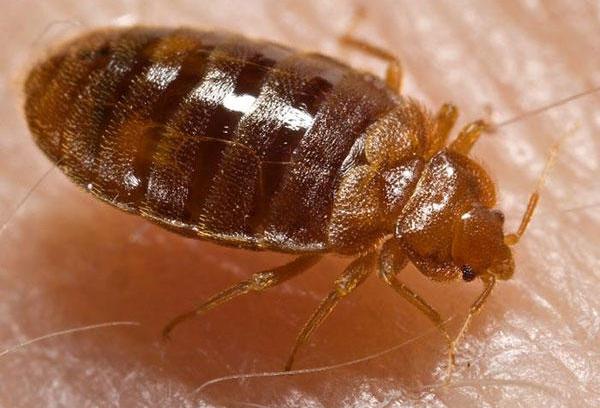
Bedbugs, some of humanity’s most undesirable pests, have been on Earth for at least 115 million years, and thus inhabited it during the same period as the largest dinosaurs.
These blood-eating heteropterous insects resisted the fall of an asteroid 67 million years ago and the many volcanic eruptions that led to the mass extinction of so many other species.
To think that these parasites that live in our beds today evolved over 100 million years ago and walked on Earth side by side with the dinosaurs was a revelation.
“This reality shows that the history of bed bug evolution is much more complex than previously thought,” says Prof. Siva-Jothy.
To establish that bedbugs were present on the planet since the Cretaceous, European paleontologists from the universities of Sheffield (United Kingdom) and Dresden (Germany) compared the DNA of dozens of current species for about fifteen years. .
Even before their first presumed host
Researchers have also discovered that bed bugs have appeared 30 to 50 million years earlier than the bat, the mammal that scientists thought, until today, to be their first host. .
Did you know?
There are no less than 100 species of bedbugs on Earth that feed on the blood of birds or mammals.
The question now is to know from which animal blood these insects about the size of a small apple seed were feeding.
We do not know what host the bugs were when T. rex was walking the surface of the Earth.
Further studies need to be done to discover the identity of this host, but scientists believe that it is unlikely that he has fed on the blood of dinosaurs.
The reason? Bedbugs parasitize an animal that usually has a nest, as humans have a bed, a way of life that dinosaurs did not adopt.
The work of the European team has established that the two species of bedbugs that parasitize humans today, the common bug ( Cimex lectularius ) and the tropical bug ( Cimex hemipterus ), appeared around 47 million years old and therefore much older than Homo sapiens .
This new knowledge seems to contradict the widespread assumption that their occurrence coincided with the split between Homo sapiens and Homo erectus about 1.6 million years ago.
Scientists have also established that:
- a new species of bedbugs conquers humans about every 0.5 million years;
- when bedbugs change host, they retain their ability to return to their original host;
- if some bedbugs restrict themselves to one host, others remain “general”, and can jump from one host to another.
These last species, according to the researchers, are likely to adapt and feed on human blood in the future, and this will probably not take half a million years, since there are more and more humans and pets who offer themselves in pantry.
Prof. Siva-Jothy hopes that a better understanding of the evolution of bedbugs will help to understand them more, and perhaps to better control their proliferation.
The details of this work are published in the journal Current Biology (New Window ).
Sheila is a seasoned technology writer and expert in the field of sustainable energy and transportation. As a lead writer for TeslaBel.com, she has spent the past decade providing readers with in-depth knowledge and analysis of the latest innovations in electric vehicles, solar energy, and cutting-edge technologies. With a degree in Electrical Engineering and a passion for the environment, Sheila brings a unique perspective to the world of green technology.






